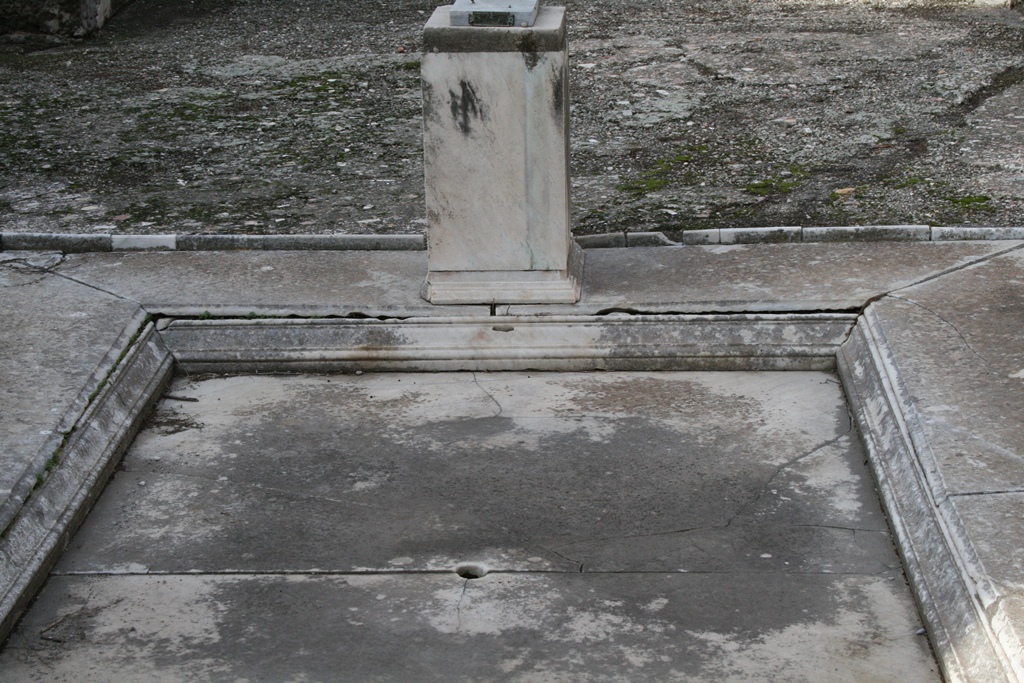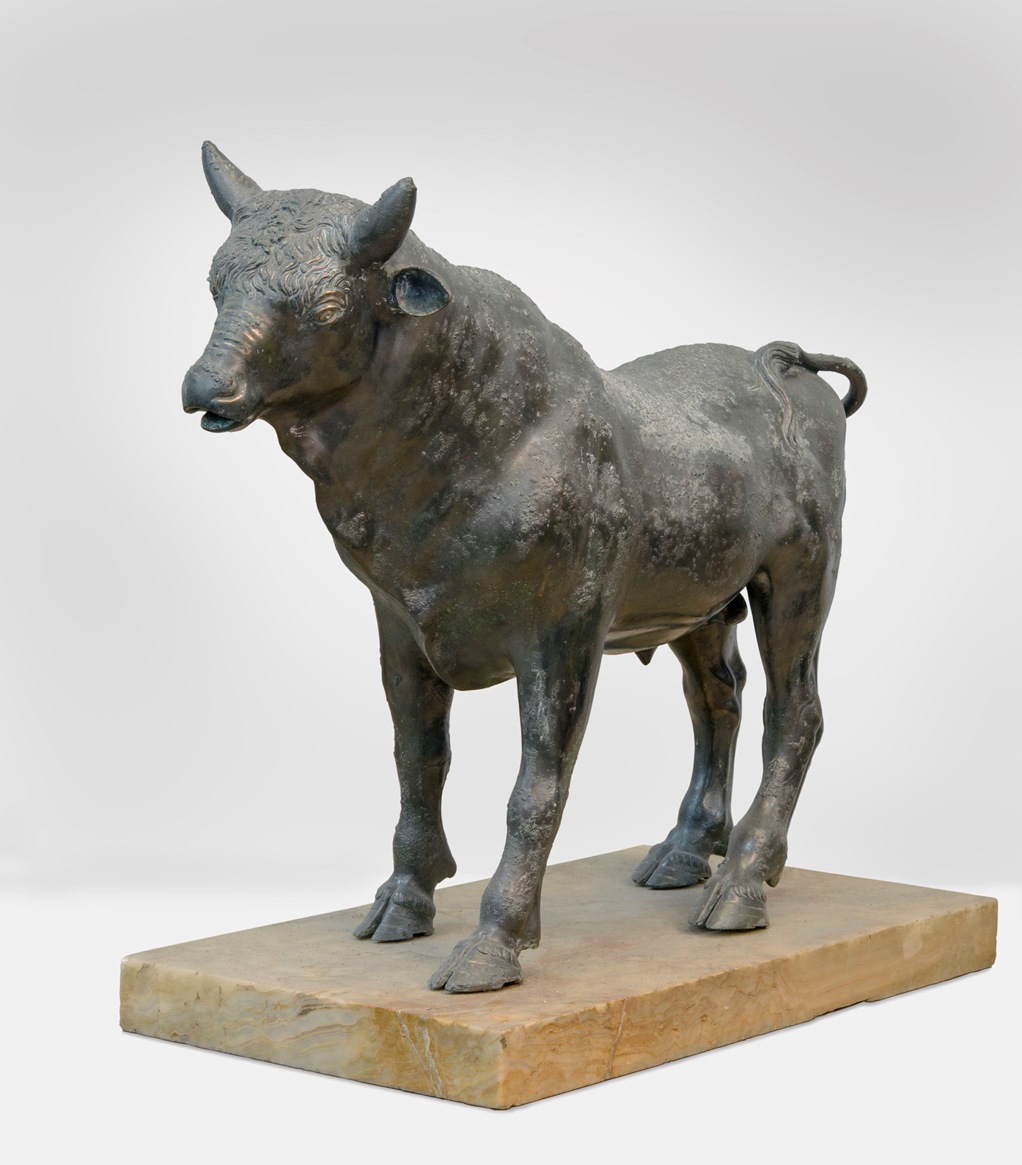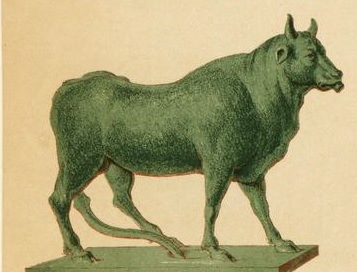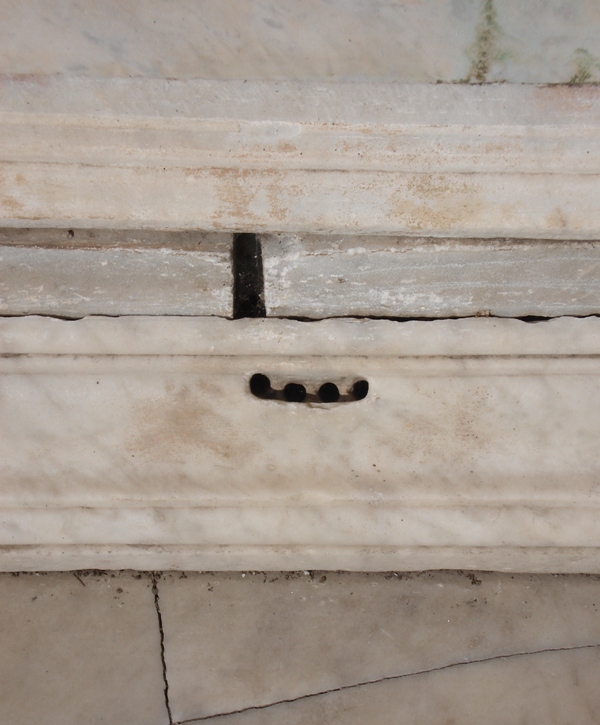Fountain
Description
Thomas Staub
The eponymous bronze statuette of a bull, found during the excavations of 1837, is a part of the water installations of the atrium (room 4) (Fiorelli 1862, 337; Schultz 1838, 167. Parts of another fountain statuette, this time showing a horse, was found in the upper layers of the pyroclastic debris covering the house. Thus it was probably not in use but kept in storage on the upper floor above the rooms on the west side of the atrium. PAH II, 337). These decorative water installations were installed in and at the impluvium, which is made of large slabs of white marble. The use of this material indicates that the impluvium in its current shape was inserted in a rebuilding phase: white marble as a material for impluvia became fashionable from Augustan times and onwards (See Fadda 1975, 162f, 166). The installation of this basin could thus coincide with the connection of this house to the aqueduct water system of Pompeii in a rebuilding phase of the house.
This eponymous bronze bull was connected to a lead pipe which led the water from the rear through the body of the animal to the outlet at the bull´s snout. A second set of fountains consisted of four small water jets, which spouted out from the moulding of the impluvium beneath the statue base. Finally, a third fountain, a water jet in the middle of the impluvium basin, completed the decorative water installations of the atrium. According to Schulz, the excavators also found a marble basin decorated with reliefs representing different animals in the impluvium (Schultz 1838, 167: "Un piccolo labro di marmo scoperto nello stesso impluvio è adornato di foglie, di lucertole, ranocchie ed altri animali bene scolpiti."). Anderson´s reconstruction (Andersson 1990, 212f.), positioning this basin below the statuette of the bull to serve as a receptacle for its water, is problematic in this position since it would block or hamper the view of the four water jets rising from the impluvium rim. It could as well have served as a basin for the central water jet. However, since it is not described in the PAH excavation reports from this house, Schulz might be mistaken in locating it here.
Even though the main role of the impluvium changed into a decorative place for fountains, its previous function, to collect rain water and lead it to the cistern, was maintained. The probably original cistern mouth, situated at the northern side of the impluvium, was deliberately obstructed in antiquity as it was filled with earth and plaster and not lapilli. The uppermost part of the original cavity was kept open to facilitate the installation of a presumed water distribution box and the pipes leading to the different fountains up till approx. 0.35 m beneath floor level. Instead, a new opening for the cistern was made in the southern rim of the impluvium, thus assuring the continued use of the cistern. The new mouth was also connected with the drain that led overflow water out into the Via di Nola. Since there are no disturbances in the pavement covering that channel, it is probable that the original overflow channel may have been reused for the new marble impluvium.
The water serving the fountains in the impluvium came through a lead pipe from the rear, northern part of the house through corridor 10, where parts of this pipe are still visible under the northwest and southwest corners. In the atrium the pipe is missing, but the groove cut into the floor for its installation is clearly discernible, running from the partition wall between the atrium and corridor 10 towards the impluvium. Since there are three sets of fountains in this area, the water flow had to be divided to the different outlets. The distribution box that served this aim was probably placed in the preserved shallow cavity at the top of the former cistern mouth. Generally every fountain or fountain group had its own water tap, so that it/ they could be turned on and off individually. As a rule the tap was positioned, as suggested here, in such a way that the fountains it controlled were visible from that spot (Cf. Jansen 2002, 54). The box and the pipes were probably taken away in connection with the excavation, since in the nineteenth century such elements were of less interest and often sold for their material value to help finance the excavations.




